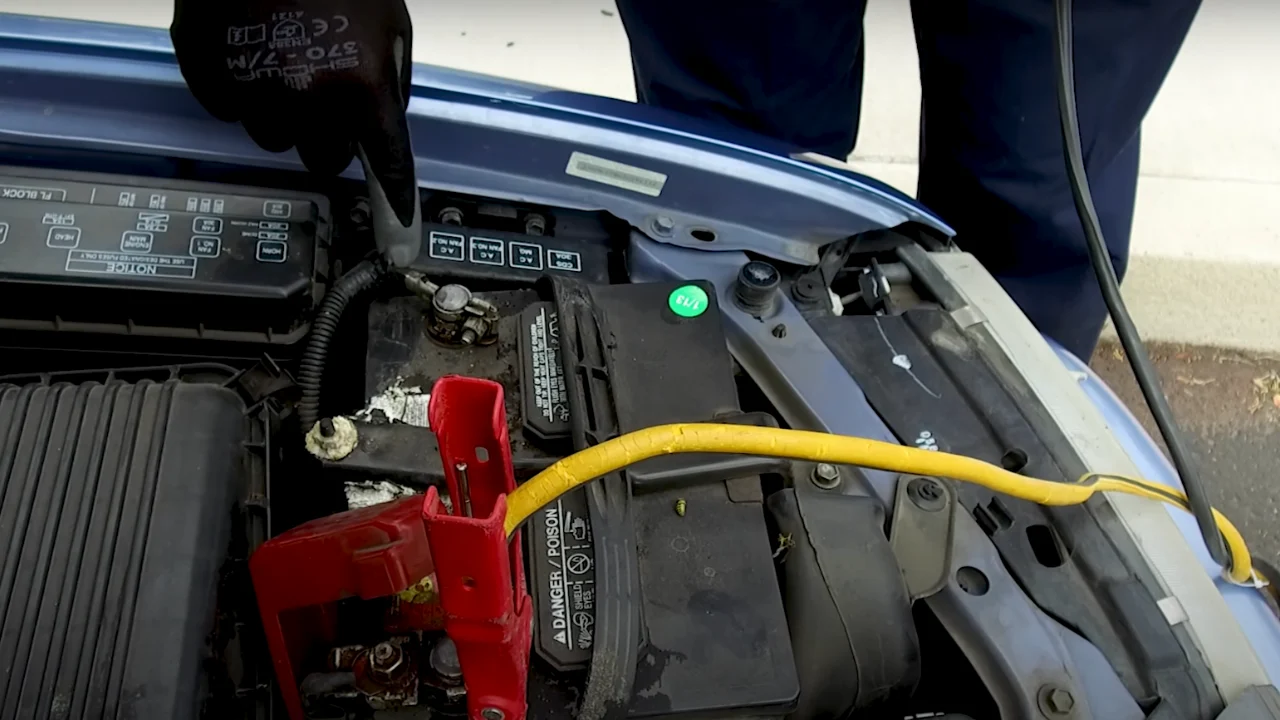Have you ever found yourself stuck with a dead battery? I know that feeling all too well, and learning how to jump start dead battery can really save the day. In fact, around 30% of drivers will face a dead battery at some point, so it’s a handy skill to have! Get insights into jump starter functionality with our article on How Does a Jump Starter Work?.
The good news is that jump-starting a car is straightforward once you know the steps. With just a set of jumper cables and another vehicle, you can get your car up and running in about 10 minutes. Trust me, it feels great to tackle this problem on your own instead of waiting for help!’
Quick Look
To jump start a dead battery, connect red clamps to both positive terminals and black clamps to the negative terminal of the good battery and an unpainted metal surface on the dead vehicle. Start the working vehicle and let it run for a few minutes. Then, try starting the dead vehicle.
What is the difference between a dead battery and a weak battery?
A dead battery has no remaining charge and cannot start a vehicle, often requiring a jump start or replacement. In contrast, a weak battery still holds some charge but struggles to power the vehicle effectively, especially in cold weather or when starting. Weak batteries may show signs like dimming lights or slow engine cranking before they completely fail. Understand the power requirements for jump-starting vehicles in our article on How Many Amps Are Needed to Jump Start a Car?.
Necessary Equipment
Before you jump-start a dead battery, it’s essential to gather the right equipment. Having the right tools not only makes the process smoother but also ensures safety. Here’s a quick rundown of what you’ll need to get started:
- Jumper Cables: Opt for heavy-duty cables, typically around 12 feet long, to reach easily between vehicles.
- Portable Jump Starter: This compact device allows you to jump-start your car without needing another vehicle, making it super convenient.
- Safety Gear: Gloves to protect your hands and safety glasses to shield your eyes from potential sparks are must-haves.
- Flashlight: A good flashlight can be handy if you find yourself dealing with a dead battery in low light conditions.
- Battery Terminal Cleaner: If your battery terminals are corroded, having a cleaning tool can help ensure a solid connection.
Step-by-Step Guide: How to Jump Start Dead Battery?
When I found myself facing a dead battery, I realized knowing how to jump-start a car is a valuable skill. It’s a straightforward process that can quickly get you back on the road. Here’s a step-by-step guide to make it easy for anyone to follow.
Step 1: Position the Vehicles

Park the assisting vehicle close enough to the dead vehicle without them touching, allowing the jumper cables to reach both batteries.
Step 2: Connect the Jumper Cables
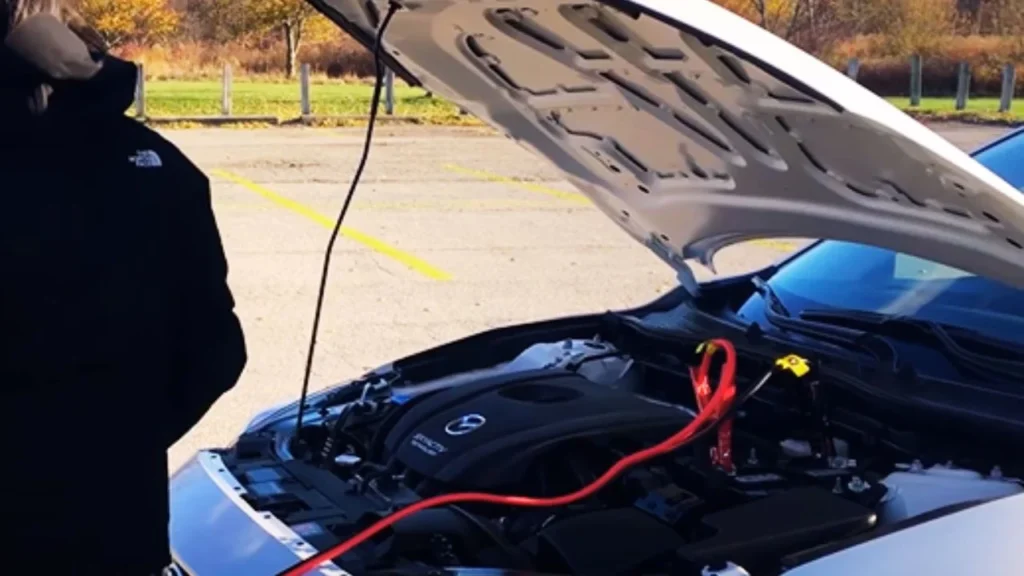
Start by attaching the red clamp to the positive terminal of the dead battery, then connect the other red clamp to the positive terminal of the assisting vehicle’s battery.
Step 3: Connect the Black Clamps

Attach one black clamp to the negative terminal of the assisting vehicle’s battery. Then, connect the other black clamp to an unpainted metal surface on the dead vehicle to prevent sparks.
Step 4: Start the Assisting Vehicle
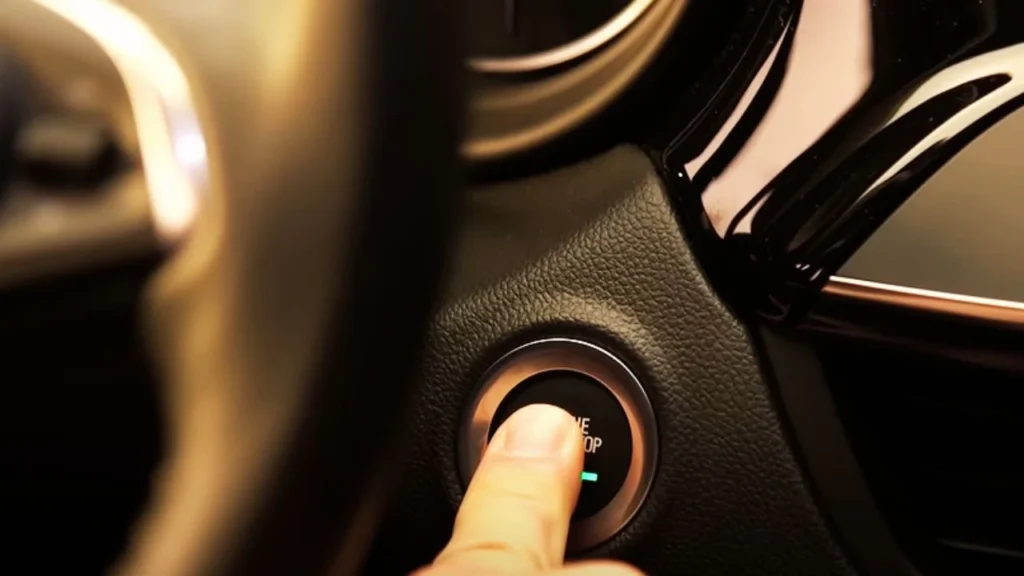
Start the engine of the assisting vehicle and let it run for about five minutes to charge the dead battery.
Step 5: Start the Dead Vehicle

After a few minutes, attempt to start the dead vehicle. If it starts, great! If not, you may need to wait a bit longer.
Step 6: Disconnect the Cables
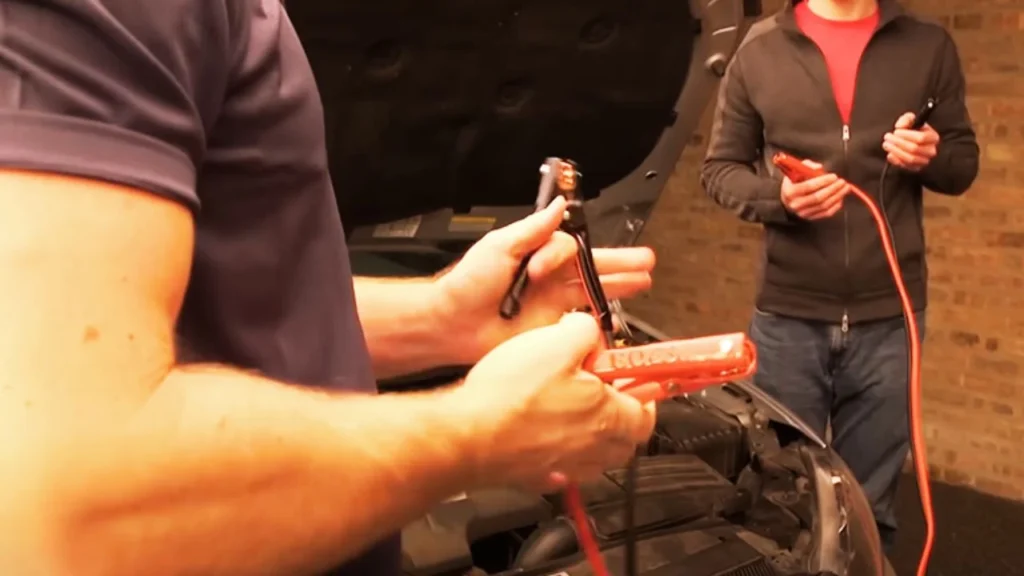
Once the dead vehicle is running, carefully remove the jumper cables in reverse order: the black clamp from the metal surface, the black clamp from the assisting vehicle, and finally, the red clamps. This ensures safety throughout the process. Find out the implications of a faulty alternator on jump-starting in our article on Can You Jump Start a Car with a Bad Alternator? What You Need to Know.
Alternative Methods
Sometimes, the traditional jump-start method isn’t the only option to revive your dead battery. Whether you find yourself without jumper cables or need a quick fix, there are alternative methods you can try. Let’s explore a couple of these handy techniques that can get you back on the road in no time.
Using a Portable Jump Starter

In addition to the traditional jumper cable method, there are a couple of other ways to jump-start a dead battery that you might find helpful. One method involves using a portable jump starter, which is a handy device that can give your car a boost without needing another vehicle.
This can be particularly useful if you’re parked in a tight spot or in an area where another car isn’t readily available.
Steps for Using a Portable Jump Starter
When using a portable jump starter, the process is quite simple. First, ensure the jump starter is fully charged; many models can hold enough power for multiple jump starts—often up to 20 or more.
Then, connect the red clamp to the positive terminal of your dead battery, followed by the black clamp to a metal ground point on your car, and then power on the jump starter. It’s a straightforward process that can get you back on the road quickly.
Push-Starting for Manual Transmission Vehicles
If you’re driving a manual transmission vehicle, you can also try push-starting your car as an alternative method. For this, you’ll need a few friends to help push your car while you pop the clutch. The basic idea is to get the car moving at about 5 to 10 mph, then engage the clutch while the vehicle is in gear. It might sound a bit intimidating, but it’s a useful skill to have, especially if you’re stuck without cables.
Post-Jump-Start Actions
After successfully jump-starting your vehicle, the first thing I do is let the engine run for at least 20 minutes. This helps recharge the battery and ensures that it gains enough power to start on its own. Trust me, giving it a little time can make all the difference.
Next, I always check the battery for any signs of damage or corrosion. A battery with a white or greenish powder around the terminals indicates corrosion, which can affect its performance. If I see this, I make sure to clean it properly or seek professional help.
Lastly, if my car still struggles to start after a jump, I know it’s time to consult a mechanic. Multiple attempts without success might point to a deeper issue. I’ve learned that seeking expert advice is crucial to avoid further complications.
Preventive Measures
Preventing a dead battery is easier than dealing with one. From my experience, proactive steps can save you time and frustration. In this section, I’ll share practical measures to keep your battery healthy and reduce the chances of being stranded.
Regular Battery Maintenance
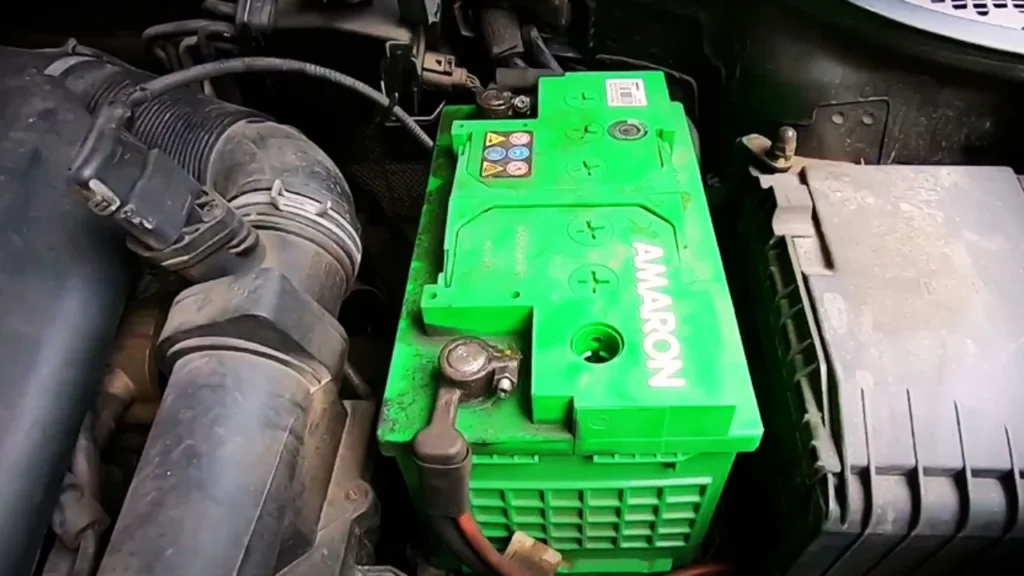
In my experience, regular battery maintenance can make a significant difference in avoiding dead batteries. For instance, cleaning your battery terminals every six months can prevent corrosion. A simple mix of baking soda and water works wonders!
Monitoring Battery Health
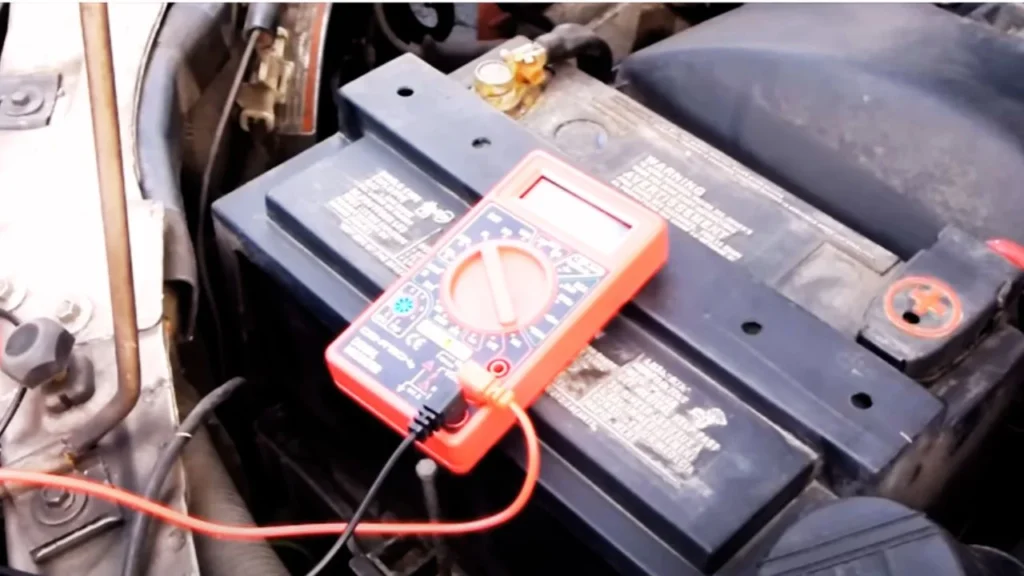
Monitoring your battery’s health is essential, especially as it ages. Typically, car batteries last about 3 to 5 years, depending on usage and climate. If your battery is nearing the end of this lifespan, it might be time to consider a replacement.
Avoiding Common Mistakes
I’ve learned the hard way about avoiding common mistakes. Always double-check your cable connections before starting the jump process. Incorrect connections can not only prevent a jump but might also damage your car’s electrical system!
Safety Guide for Jump-Starting a Dead Battery
1. Inspect the Batteries
Before starting, check both batteries for any signs of damage or leaks. If you notice any cracks or corrosion, do not attempt to jump-start the vehicle, as this can lead to hazardous spills or explosions.
2. Wear Protective Gear
Always wear safety glasses and gloves when handling batteries. This protective gear will shield you from potential acid splashes and sparks during the jump-start process.
3. Ensure Proper Ventilation
Work in a well-ventilated area to prevent the accumulation of potentially explosive gases released by the batteries. Avoid enclosed spaces, such as garages, when jump-starting a vehicle.
4. Turn Off Electronics
Ensure that all electronic devices in both vehicles are turned off before connecting jumper cables. This helps prevent electrical surges that could damage your vehicle’s electrical system.
5. Follow the Connection Order
When connecting cables, follow the correct sequence to prevent sparks:
- Connect the red clamp to the positive terminal of the dead battery.
- Attach the other red clamp to the positive terminal of the charged battery.
- Connect the black clamp to the negative terminal of the charged battery.
- Attach the other black clamp to a non-painted metal surface on the dead vehicle.
6. Remove Cables Safely
After jump-starting the vehicle, remove the cables in the reverse order of connection. Ensure that the clamps do not touch each other while disconnecting, as this can create sparks. Check out our article on Top 6 Best Car Jump Starters with an AC Outlet: 2024 Picks for the latest options in portable power solutions.
Final Words
In my experience, knowing how to jump start dead battery can save you from frustrating situations. With just a pair of jumper cables and a few minutes, you can get back on the road. Remember, regular battery maintenance can prevent future issues and ensure your vehicle is always ready to go. Keep this guide handy, and you’ll feel more confident whenever you face a dead battery. Happy driving!
Discover affordable yet reliable choices in our article on 6 Best Budget Jump Starters in 2024 that won’t break the bank.
